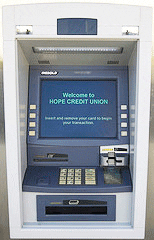
Decaying infrastructure. Blighted buildings. Transportation gaps. Food deserts. Social unrest.
But stabilizing these communities doesn't require rocket science. Many examples exist that demonstrate the transformative role that community development financial institutions (CDFIs) play in catalyzing housing, education, business development, and access to quality health care. I firmly believe the presence of a strong CDFI is a necessary element to ensuring brighter futures for struggling places across America.
Consider the dramatic progress that has taken place along the O.C. Haley Corridor in New Orleans’ Central City in the decade since community residents and leaders came together to organize a Hope Credit Union branch (infographic follows).
An assessment of community needs and assets commissioned by the Annie E. Casey Foundation had revealed scars from decades of disinvestment. For generations, no bank was available to address the financial needs of area residents, businesses and nonprofits. The community was too poor, too black and too challenging to attract a traditional depository.
The flexibility of development finance—money that earns less than the market rate but serves a community need—is critical to creating places where people can thrive. We never know exactly which tool we will need, but having a CDFI is like having a Swiss Army knife in your pocket.
Benefits to communities can range from the basic and obvious—better access to banking services and mortgages, to the more complex—financing markets that bring fresh, healthier food into cities and provide jobs for unemployed or underemployed residents. A strong CDFI also taps a vast network of partners and leverages public and private resources that serve as a multiplier for its own resources.
Too often, effective solutions to difficult problems fail to get the attention of elected officials and philanthropic leaders, crowded out by strategizing for the next election or (often unproven) innovation. In the meantime, the economic divide is widening, and people and communities continue to suffer.
We know what good development looks like, even in a place like New Orleans that took terrible hits from Hurricane Katrina and the Great Recession. CDFIs can galvanize transformation in places where our most vulnerable citizens live. Across this nation, there are communities of all shapes and sizes that need what the O.C. Haley Corridor needed.
Let us put our hands to the plow and our treasure to the purpose.
I believe the presence of a strong community development financial institution (CDFI) is a necessary element to ensuring brighter futures for these places.
(Image credit: Photo by Flickr user Derek Bridges, CC BY 2.0; Infographic courtesy of HOPE Credit Union)






Comments